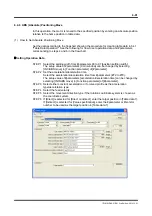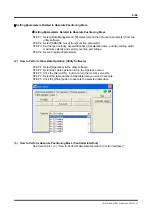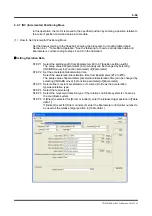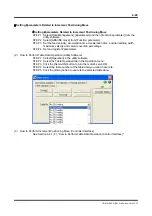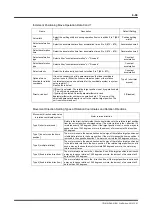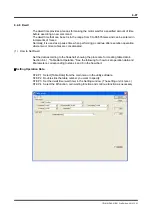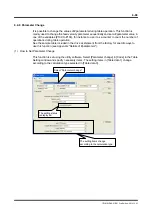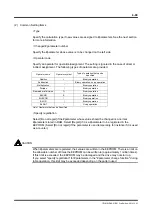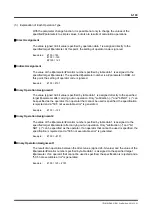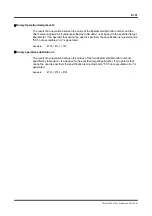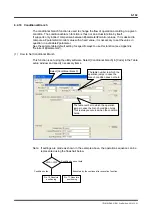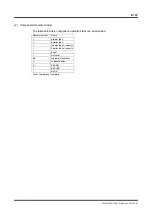
6-88
TI71M01D06-01EN 3rd Edition: 2012.12.01
Setting #parameters Related to Homing
See #parameters related to the homing function for the items to be set.
Setting Parameters by Function
STEP 1 Select [Data Management], [#parameter] and then [Function parameter] from the
utility software.
STEP 2 Select [Homing, absolute motor].
STEP 3 Set #parameters as necessary.
Setting of system setup register
STEP 1 Select [Data Management], [#parameter], [Function parameter] and then [Register
#parameter 3] from the utility software.
STEP 2 Set #parameters as necessary.
List of Homing Table Data 0
Name Description
Default
Setting
Coin window
Select the coin window for homing move from coin windows 0 to 7 (#90
- #97).
Coin windows 0
Select acceleration
time
Select the acceleration time from acceleration times 0 to 3 (#72 - #75). Acceleration time 0
Select deceleration
time
Select the deceleration time from deceleration times 0 to 3 (#76 - #79). Deceleration time 0
Select acceleration
type
Select either "constant acceleration" or "S-curved profile."
Constant velocity
Select deceleration
type
Select either "constant acceleration" or "S-curved profile."
Constant velocity
Optional move
direction for rotation
coordinate
It is not necessary to set this parameter when the linear coordinate
system is used. (Either the linear coordinate system or rotation
coordinate system can be selected for the coordinate system using
system setup register 1.) See the table below.
Type 0 [short way
around]
Movement Direction Setting Types and Rotation Directions for Rotation Coordinates
Movement direction setup value
for rotation coordinates
Motor rotation direction
Type 0 [short way around]
The motor rotates in the direction that yields the shortest distance to the target
position from the current position command value. (The motor rotates in the +
direction if it is rotated exactly 180 degrees.) Even if a target position that would
cause the motor to rotate 360 degrees or more is set, the amount of movement
will be less than 360 degrees.
Type 1 [do not cross the home
position]
The motor moves in the same direction as the sign of the target position set in
table data relative to the home position. If the motor performs an operation to
cross the home position, it will move in the opposite direction. The motor will
never rotate 360 degrees or more.
Type 2 [multiple-rotation]
The motor moves in the same direction as the sign of the target position set in
the table data relative to the home position. If a target position that would cause
the motor to rotate 360 degrees or more is set, the motor may rotate multiple
times.
Type 3 [fixed rotation dir]
The motor always moves in the + direction. Even if a target position that would
cause the motor to rotate 360 degrees or more is set, the amount of movement
will be less than 360 degrees.
Type 4 [fixed rotation direction -]
The motor always moves in the - direction. Even if a target position that would
cause the motor to rotate 360 degrees or more is set, the amount of movement
will be less than 360 degrees.


















